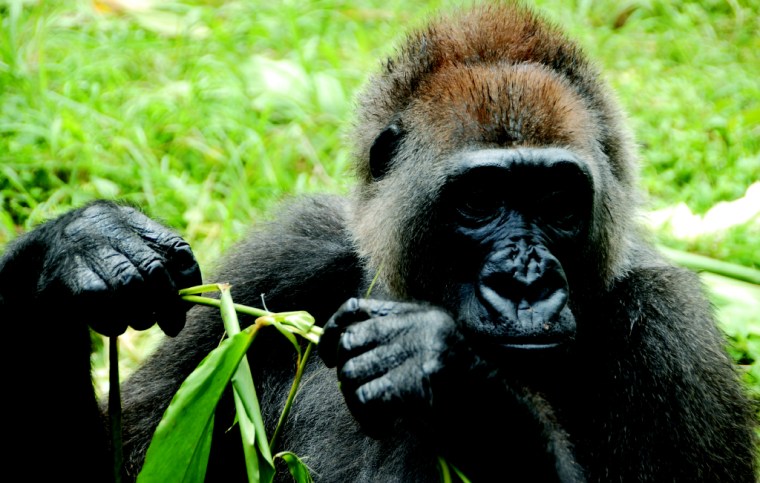The world's rarest gorilla has significantly more suitable habitat than thought, a new study using satellite data has revealed.
The findings will be used in future conservation actions regarding the critically endangered gorilla, researchers said.
The researchers used a combination of satellite imagery and ground surveys to map the distribution of forest habitats and the current range of the Cross River gorillas (Gorilla gorilla diehli). There are fewer than 300 of these gorillas across its entire range, which is limited to the forested mountainous region on the border between Nigeria and Cameroon.
Their findings showed the gorilla population was distributed throughout an area that is more than 50 percent larger than previously documented.

"This latest research has greatly expanded our knowledge on Cross River gorilla distribution, which will lead to more effective management decisions," study researcher Aaron Nicholas of the Wildlife Conservation Society said in a statement.
Suitable habitat
The research team, which included collaborators from the WCS, the North Carolina Zoo and Hunter College CUNY's department of anthropology, used high-resolution satellite images to map the distribution of forests. Field researchers then traveled to more than 400 control points to confirm the precision of the maps, determining they had an accuracy rate of 90 percent or higher.
The Cross River region was sectioned off into 98-foot-squared (30-meter-squared) pixels, with each pixel rated for suitability as a habitat for the gorillas. Steep, forested areas with low human activity received a high rating, while lowland areas that are significantly affected by humans received a low rating.
The ratings were used to create a habitat suitability map for the area, which the team used to select 12 field survey locations that possessed all the characteristics of a suitable gorilla habitat. The field researchers found signs of gorilla presence — in the form of nests and dung — in 10 of the 12 sites. Most of these areas had no record of the gorillas, according to the study.
"The good news for Cross River gorillas is that they still have plenty of habitat in which to expand, provided that steps are taken to minimize threats to the population," study researcher and WCS conservationist Andrew Dunn said.
Future work
Additionally, the researchers found a high degree of connectivity between the known locations where gorillas live, including vital corridors that can help them move between sites in search of mates. The study also located parts of the population that are threatened by isolation through fragmentation caused by the development of farmland and other forms of habitat degradation.
"For small populations such as this one, the maintenance of connective corridors is crucial for their long-term survival," WCS researcher Inaoyom Imong said. "The analysis is the first step in devising ways to rehabilitate degraded pathways."
The study was published Nov. 1 online in the journal Oryx, and the authors will discuss their findings at the Cross River gorilla workshop, which is scheduled for Feb. 21-23 in Limbe, Cameroon, to help formulate a five-year regional plan for the subspecies.
"We're pleased with our results, which have helped us to identify both new locations where the gorillas live and apparently unoccupied areas of potential gorilla habitat," study researcher Richard A. Bergl of the North Carolina Zoo said. "The study is a great example of how scientific research can be directly applied to great ape conservation."
You can follow LiveScience writer Remy Melina on Twitter . Follow LiveScience for the latest in science news and discoveries on Twitter and on .
